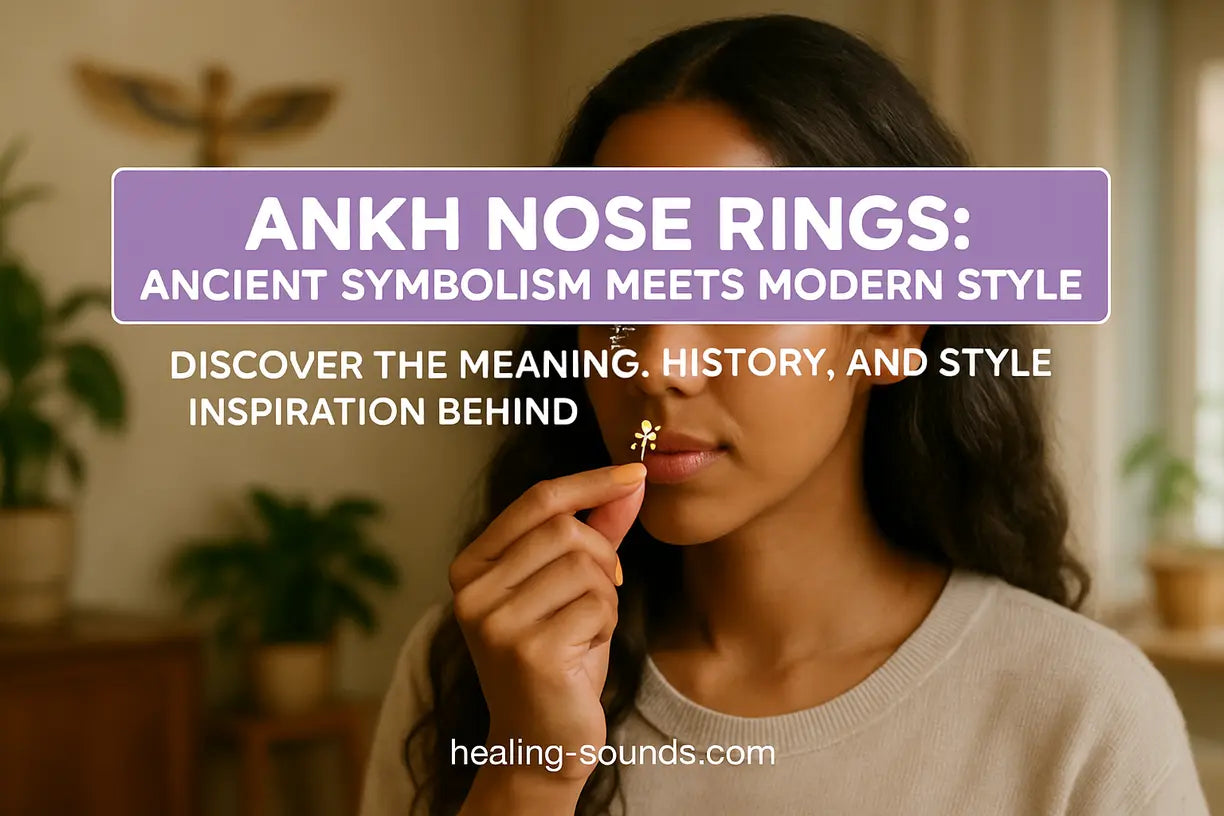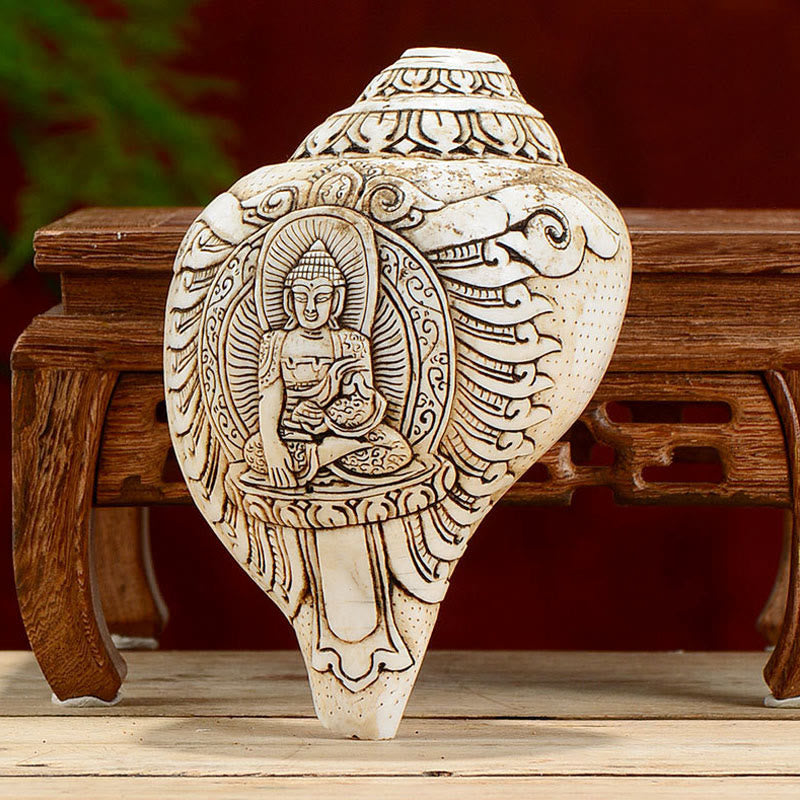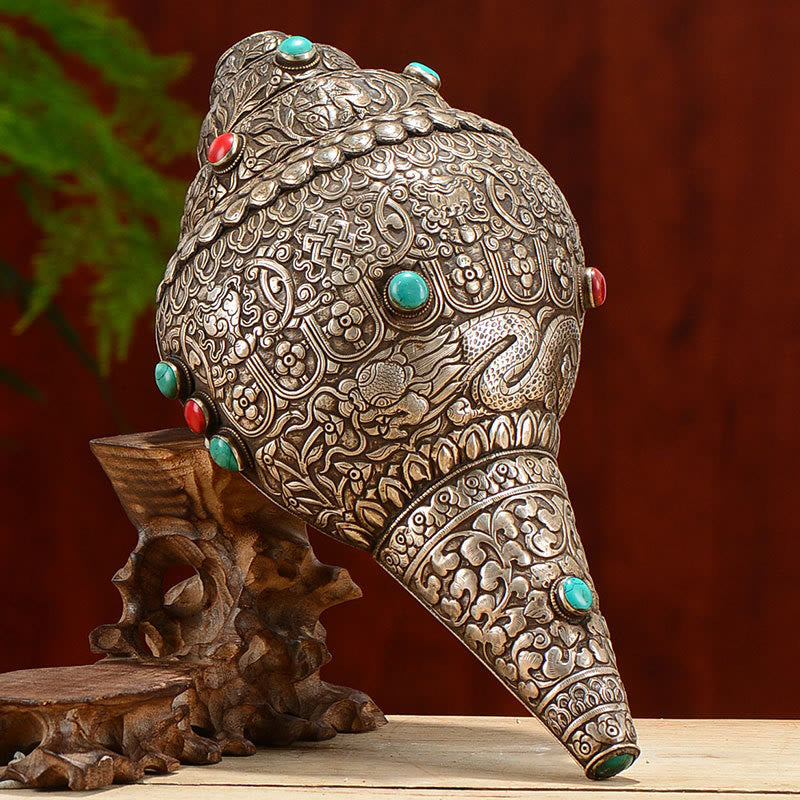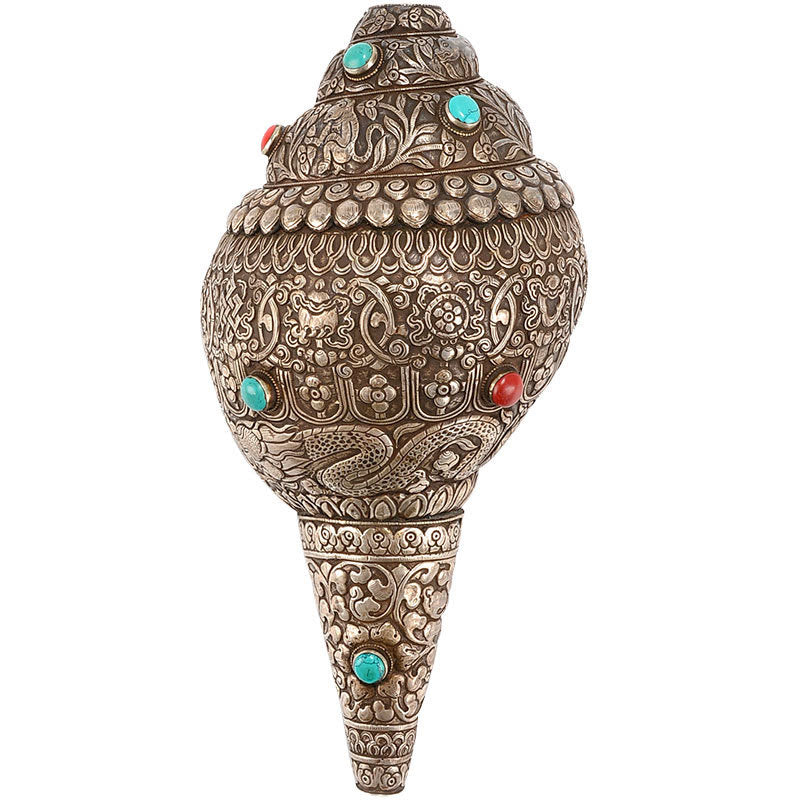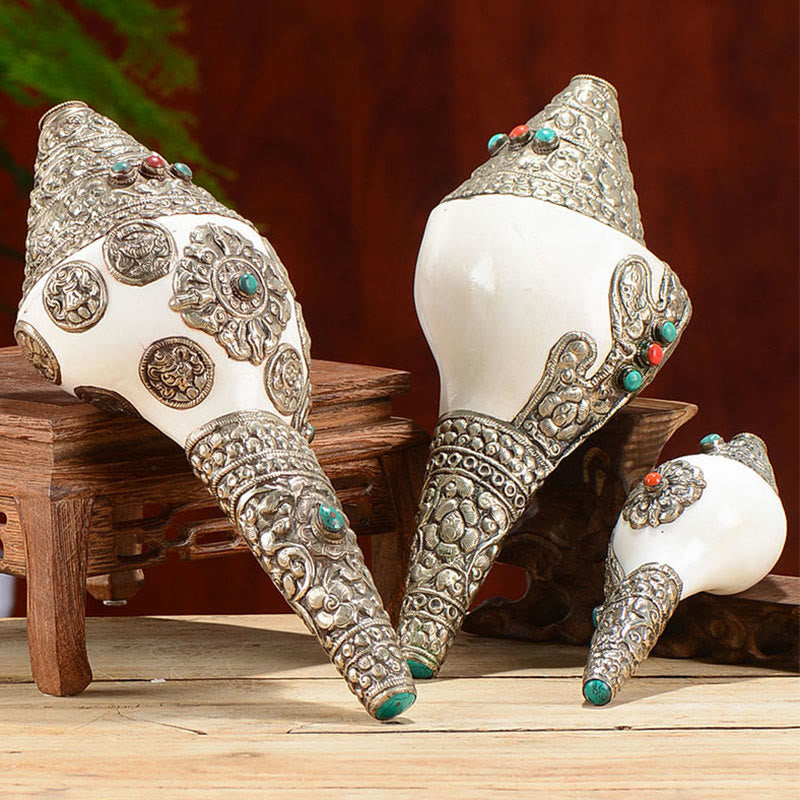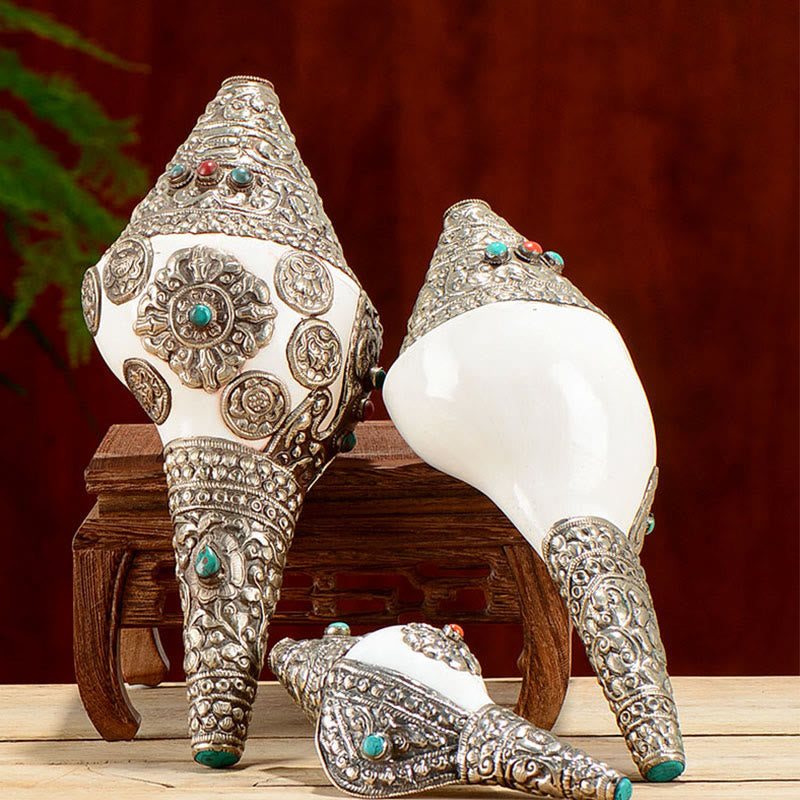Le symbolisme durable de l'Ankh
Avant d'orner les bijoux corporels, l'ankh était l'un des symboles les plus importants de l'Égypte antique. Souvent appelée « clé de vie » ou « souffle de vie », cette croix en forme de boucle symbolisait la vie éternelle et était fréquemment représentée entre les mains des dieux et des déesses, accordant la vie aux pharaons. Sa forme symboliserait l'union des énergies masculine et féminine : la boucle représente l'utérus et le T la force créatrice masculine, créant ainsi un équilibre harmonieux essentiel à la création.Que symbolise un anneau de nez Ankh ?
En portant l'ankh comme anneau de nez, vous associez ce symbolisme ancien et profond à l'affirmation personnelle et visible d'un piercing facial. La signification prend alors de multiples facettes, reflétant à la fois l'histoire du symbole et votre intention personnelle.Une déclaration de vie et de vitalité
Porter un ankh est avant tout une affirmation de la vie. C'est un rappel personnel de votre vitalité, de votre énergie créatrice et de votre connexion à la force vitale universelle. Un anneau de nez ankh devient un symbole, petit mais puissant, de votre joie de vivre et du cycle continu de renouvellement et de croissance de votre propre cheminement.Un talisman pour la protection spirituelle
Historiquement, l'ankh était une puissante amulette protectrice. Utilisé comme anneau de nez, il peut être considéré comme un talisman moderne, protégeant le bien-être spirituel et physique de celui qui le porte. Porté comme un bouclier contre la négativité et un phare d'énergies positives et vivifiantes, il est un choix populaire pour ceux qui suivent un chemin spirituel.Adopter l'autonomisation personnelle
L'ankh représente également la puissance et l'autorité divines. Porter ce symbole est une déclaration d' autonomie et de souveraineté personnelle . Il symbolise une connexion à son moi supérieur et la force intérieure nécessaire pour naviguer dans le monde avec confiance et grâce.
Les racines culturelles et historiques du piercing au nez
Bien que l'ankh soit typiquement égyptien, le piercing au nez a une histoire longue et variée à travers le monde. Cette pratique remonte à des milliers d'années, avec des traditions notables au Moyen-Orient, en Inde et parmi les tribus indigènes d'Afrique et des Amériques. Pour une compréhension plus approfondie de sa signification culturelle, consultez la présentation du piercing corporel dans l'Encyclopédie de l'histoire mondiale . Dans de nombreuses cultures, l'anneau nasal symbolisait le statut social, la richesse, l'état matrimonial, voire la rébellion.Choisir et porter votre anneau de nez Ankh
Les anneaux de nez Ankh se déclinent en différents styles, des clous discrets aux anneaux plus imposants. Des matériaux comme l' anneau de nez Ankh en or apportent une touche chaleureuse et luxueuse, tandis que l'argent sterling offre un style classique et élégant. Le style que vous choisissez peut refléter votre personnalité : délicat et minimaliste ou audacieux et affirmé. Quel que soit le modèle, le porter est un choix conscient pour s'accorder à sa puissante symbolique. Choisir un bijou aussi significatif peut être un rituel en soi. Créer un espace sacré pour réfléchir à la signification du symbole peut renforcer votre lien avec lui. Des objets évoquant une énergie ancestrale peuvent contribuer à donner le ton à cette cérémonie personnelle.
Choisir un bijou aussi significatif peut être un rituel en soi. Créer un espace sacré pour réfléchir à la signification du symbole peut renforcer votre lien avec lui. Des objets évoquant une énergie ancestrale peuvent contribuer à donner le ton à cette cérémonie personnelle. Décoration tibétaine en coquillage Shankha gravé à la main
$1,009.99 $1,299.99
Enrichissez votre espace sacré et vos rituels de bijoux corporels avec cette coquille de conque gravée, évoquant une énergie symbolique ancienne.
Explorer le produit S’entourer de symboles puissants peut créer un environnement qui soutient votre cheminement spirituel et vos intentions de croissance personnelle.
S’entourer de symboles puissants peut créer un environnement qui soutient votre cheminement spirituel et vos intentions de croissance personnelle.Créez un espace sacré pour vos symboles
$1,909.99
$2,399.99
Invitez la prospérité et une puissante bénédiction symbolique dans les rituels honorant des bijoux comme les anneaux de nez ankh avec ce coquillage gravé. En savoir plus ➔
$69.90
$99.90
Fusionnez le symbolisme spirituel des dragons mythiques avec l'autonomisation personnelle : une association inspirante pour les bijoux corporels symboliques. En savoir plus ➔
Un symbole de votre histoire
En fin de compte, un anneau de nez ankh est une forme d'expression profondément personnelle. C'est une façon d'emporter avec soi au quotidien un morceau d'histoire ancienne et un puissant symbolisme. Que vous le portiez pour vous protéger, pour célébrer la vie ou pour témoigner de votre propre cheminement vers l'émancipation, il témoigne du pouvoir inébranlable des symboles pour nous connecter à quelque chose de plus grand que nous-mêmes.Questions fréquemment posées sur le symbolisme de l'anneau nasal Ankh
Un anneau de nez ankh symbolise la vie éternelle, la protection spirituelle et l'émancipation personnelle . Il associe le symbole égyptien antique de la « clé de vie » à la modernité du piercing nasal, symbole de vitalité, de connexion au divin et d'équilibre harmonieux des énergies masculines et féminines.
Historiquement et culturellement, un anneau de nez peut symboliser de nombreuses choses, notamment la richesse, le statut matrimonial, la beauté, la rébellion et une signification spirituelle. Sa signification dépend souvent de la culture et de l'intention de chacun, allant d'un simple accessoire de mode à un symbole personnel ou culturel profond.
Les anneaux de nez sont mentionnés dans l'Ancien Testament comme des objets de parure et de richesse. Par exemple, dans Genèse 24:47, le serviteur d'Abraham offre un anneau de nez à Rébecca. Dans d'autres passages, ils sont cités parmi d'autres bijoux. Le contexte décrit généralement les pratiques culturelles de l'époque plutôt qu'une approbation ou une condamnation théologique.
Dans certaines traditions, notamment celles influencées par l'Ayurveda indien, le côté du piercing du nez revêt une signification particulière. Le piercing de la narine gauche est le plus courant et est censé être associé aux organes reproducteurs féminins et faciliter l'accouchement. Le piercing du côté droit est moins courant, mais il est parfois associé à l'énergie masculine ou simplement choisi par goût esthétique.
Bien que le symbole ankh soit originaire de l'Égypte ancienne, peu d'éléments suggèrent que le perçage du nez était une pratique courante à l'époque dynastique. Cependant, cette pratique s'est répandue au Moyen-Orient et en Afrique du Nord au fil du temps, et les anneaux nasaux sont courants dans l'Égypte moderne et dans les cultures bédouines actuelles, mêlant symboles anciens et traditions régionales.

